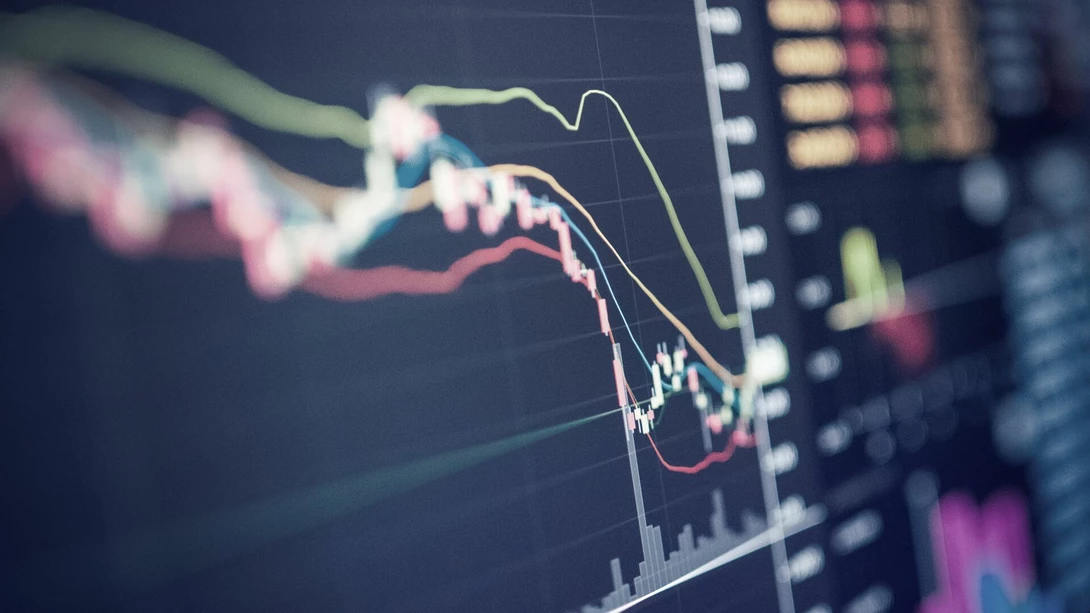Five things you need to know about on the markets this week – Biden, big banks and central banks, bond yields, and Bitcoin | Currency News | Financial and Business News

Bill Clark/Getty Images
- The stock market has shrugged off turmoil in DC and investors are focused on Joe Biden’s plans for the economy.
- Bond yields are around their highest in a year, as traders prepare for a lot less stimulus from the Federal Reserve.
- Earnings season gets underway, with Goldman Sachs, Netflix and IBM, among others.
- Visit Business Insider’s homepage for more stories.
Stock markets finished the second week of January having reached all-time highs, overlooking fairly gruesome US labor market data, the ongoing explosion in cases of COVID-19 and unprecedented political turmoil in the final days of Donald Trump’s presidency, as he faces impeachment – again.
Reflation has been the name of the game across the markets and anything even remotely economically sensitive has surged, including small-cap stocks, oil and gas and, of course, cryptocurrencies, particularly following Joe Biden’s plans for a $1.9 trillion stimulus package.
Next week brings a heady mix of the political, the macroeconomic, the corporate, and the crypto. Here’s five things we’ll be watching
January 20 bids farewell to one of the most controversial US presidents in living memory. After four years in the White House, Trump will bow out, leaving Biden as the 46th president. Trump will also be the first US president to be impeached twice over his role in the storming of the Capitol by violent supporters of his on January 6 who attempted to stop the counting of the electoral college votes.
The siege has had little impact on the financial markets, as the S&P 500 hit record highs, buoyed by economic optimism and hopes that COVID-19 vaccines will eventually offer a permanent route out of lockdowns and mobility restrictions. Even though Trump says he won’t attend the inauguration, there will be more troops in Washington DC on the day than in Iraq and Afghanistan combined to quell any potential security threats.
After having lain dormant for years, inflation could be making a comeback. Market-based expectations for inflation have picked up sharply in the latest week, as a steady rollout of COVID-19 vaccines has helped feed a sense of optimism that, while things are pretty grim right now, they are about to turn a corner.
With a Democrat-controlled Congress, investors believe there will be less pressure on the Federal Reserve to step in and provide extra support to the economy, whether that is via a rate cut or an increase in its bond purchases that help keep credit cheap.
Bond yields have marched higher and yield curves – the difference between short-dated and long-dated bond yields – have steepened, dragging the dollar higher and reflecting this perception that inflation will start to take root as the economy recovers, which eventually, in theory, will merit a rate rise.
But for now, investors need not fret too much about a damaging inflationary spiral. This initial increase in expectations is more a matter of making inflation “less low” and should remain the case over the next year, at least, according to RBC Global Asset Management’s chief economist Eric Lascelles said in a note this past week.
Most notably, the US 10-year breakeven inflation rate – a market-based gauge of inflation expectations based on the difference between nominal bond yields and their inflation-linked counterparts – has topped 2% for the first time since late 2018. The prevailing consumer inflation rate is well below there. At the last count it was 1.4%.
“Far from forcing central banks to hike rates prematurely, central banks are likely actually celebrating the development. This is in part for the aforementioned reason: it is dragging inflation and expectations closer to their target,” Lascelles said.
Investors will get a chance to see how some of the world’s most influential central bankers are reacting to the pick up in inflation expectations, given that a number of them meet next week to discuss monetary policy. And, on top of that, we’ll get inflation readings from the UK, the eurozone, Germany, Canada, Japan, and New Zealand.
UBS Global Wealth Management said this past week that the top question among their clients was: “Central banks around the world try to create inflation, but how can they reconcile: higher inflation means higher rates and higher rates will lead to higher debt burdens for most of the counties?”
The People’s Bank of China, the European Central Bank and the Bank of Canada all convene to discuss interest rates and the likely course of monetary policy in their respective economies.
Managing the ongoing fallout from the COVID-19 pandemic, as economies across Europe, the Americas and parts of Asia impose hefty restrictions on movement and even full-on lockdowns, will be front and center. But, with the advent of mass vaccination, none are expected to do more than they are currently committing to.
After the stomach-clenching contraction in the economy in the second quarter of 2020, corporate earnings staged a turnaround. Chief executives expressed confidence about the outlook for earnings growth and the economy and their optimism was reflected in a batch of third-quarter results that contained the most upside surprises in a decade.
This week, investors will get a look at how Wall Street weathered the final, turbulent three months of the year, when a contested presidential election, another surge in global cases of COVID-19 and the euphoria from the emergence of a vaccine made for a volatile quarter.
Bank of America, Goldman Sachs and Morgan Stanley report results and there will be a lot of scrutiny over what they say about anything from the provisions they’ve made to deal with struggling consumers, market volatility, and the outlook for 2021 and beyond.
In the tech sector, pandemic “winner” Netflix reports fourth-quarter results. There will be intense focus on the streaming platform’s subscriber numbers to see if it was able to keep audiences glued to their TV screens and away from rival Disney+, even after the economy effectively reopened from mid-year onwards.
A couple of “real economy” companies also report next week, which could give the “Great Rotation” trade of late 2020 another shot in the arm. Oil services companies Schlumberger and Baker Hughes – both of which got battered by the historic fall in crude prices in the spring when global transport ground to halt – will deliver fourth-quarter results, along with semiconductor maker Intel and “OG” Big Tech company IBM.
It’s impossible to talk about markets right now without talking about crypto. Bitcoin hit record highs near $42,000 on January 8 and since then, has been enveloped in huge volatility that has seen the price lose as much as 20% in 24 hours, only to regain it in the following 24 hours.
Big-name investors have sung its praises, and some investments banks have even talked about it as a viable safe-haven alternative to gold. Last week, however, a growing number of voices began to talk about a possible bubble in cryptocurrencies. They drew comparisons with the dot-com crash of the late 1990s, in which technology company valuations were pumped sky-high by investors keen to jump on the “digital bandwagon,” only to have those prices collapse within weeks.
Google searches for “Bitcoin” are around their highest since late 2017, when the coin first rocketed to a then-record around $19,890 from around $4,000 in about three months. In the last three months, the price of a Bitcoin has more than doubled to around $35,000 from closer to $14,000 and most market watchers agree that a correction isn’t beyond the realm of the possible.
This week’s Chart of the Week takes a look at the shift in market-based inflation expectations and the stock market, most notably, the S&P 500, over the last five years.

Bloomberg/Insider





